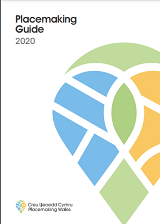Placemaking Guide and Charter 2020

This Design Commission for Wales guide and charter has been produced to support the development of high quality places across Wales for the benefit of communities. Housing LIN Cymru is delighted to a signatory to this Charter. With our commitment to the HAPPI design principles, we firmly support the Charter’s 6 core components (set out below) and, more widely, the inclusive approach to placemaking, including creating age-friendly homes and communities.
In signing the Placemaking Wales Charter, organisations must agree to support placemaking in all relevant areas of their work and promote the following principles in the planning, design and management of new and existing places:
- People and community: The local community are involved in the development of proposals. The needs, aspirations, health and well-being of all people are considered at the outset. Proposals are shaped to help to meet these needs as well as create, integrate, protect and/or enhance a sense of community and promote equality, including older people.
- Location: Places grow and develop in a way that uses land efficiently, supports and enhances existing places and is well connected. The location of housing, employment, leisure and other facilities are planned to help reduce the need to travel. For examples, there is also reference to extra care housing
- Movement: Walking, cycling and public transport are prioritised to provide a choice of transport modes and avoid dependence on private vehicles. Well designed and safe active travel routes connect to the wider active travel and public transport network, and public transport stations and stops are positively integrated.
- Mix of uses: Places have a range of purposes which provide opportunities for community development, local business growth and access to jobs, services and facilities via walking, cycling or public transport. Development density and a mix of uses and tenures helps to support a diverse community and vibrant public realm. For example, the adoption of cohousing is referenced
- Public realm: Streets and public spaces are well defined, welcoming, safe and inclusive with a distinct identity. They are designed to be robust and adaptable with landscape, green infrastructure and sustainable drainage well integrated. They are well connected to existing places and promote opportunities for social interaction and a range of activities for all people.
- Identity: The positive, distinctive qualities of existing places are valued and respected. The unique features and opportunities of a location, including heritage, culture, language, built and natural physical attributes, are identified and responded to.
